This is a review of the freeware Corby CJ-1 Starlet add-on from
Classic Wings, and as such, the review will not go into as much
detail as usual. If you are interested in this add-on, please
download it from the link at the bottom of the review and give
it a go for yourself.
History Lesson
The Starlet is a single seat, amateur built aeroplane designed
in the 1960’s by John Corby. It is primarily made from wood,
finished with fabric and comes with a variety of engines ranging
from the 50 – 80hp VW Air cooled engines, the 80hp Rotax 912UL
and the 85hp Jabiru 2200.
The performance characteristics of each Corby would vary due to
factors such as weight, engine size, engine power or how
straight the airframe was built and finished!
It is certified for aerobatics at 4.5g, I think that the design
of the aircraft clearly shows that it has been designed with
aerobatics in mind.
Download and Installation
Whilst not a totally automated installation procedure it is
still fairly simple. You need to download the file from the
Classic Wings website and extract the file to the sim objects/airplanes
folder within FSX. The download is only 22.5mb and shouldn’t
take too long to download. The file is available from a number
of websites, but I found that the quickest download came from
the Classic Wings website. Once installed you’ll find the
aircraft listed under ‘Corby’ in the FSX aircraft directory,
along with 6 liveries. One of the liveries is white, which may
enable you to create your own livery if you wish.
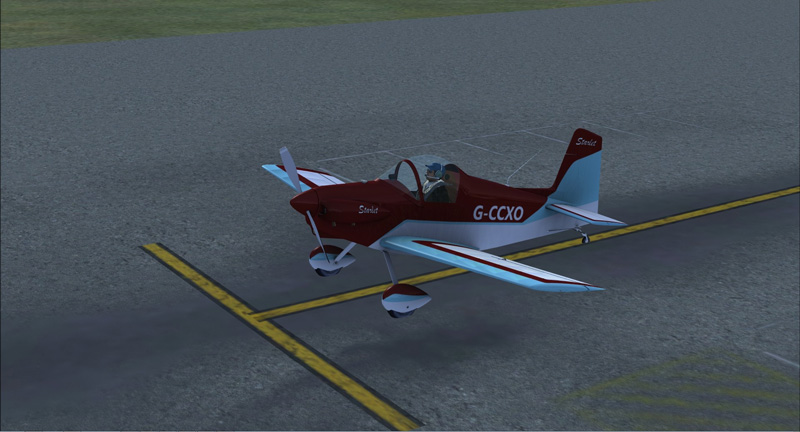 |
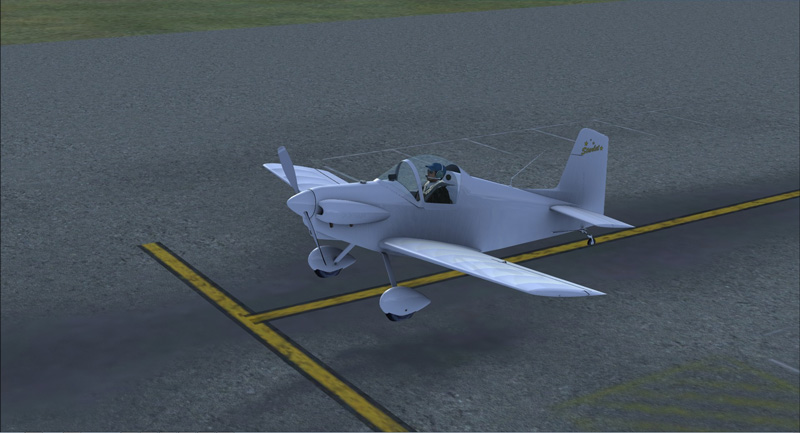 |
 |
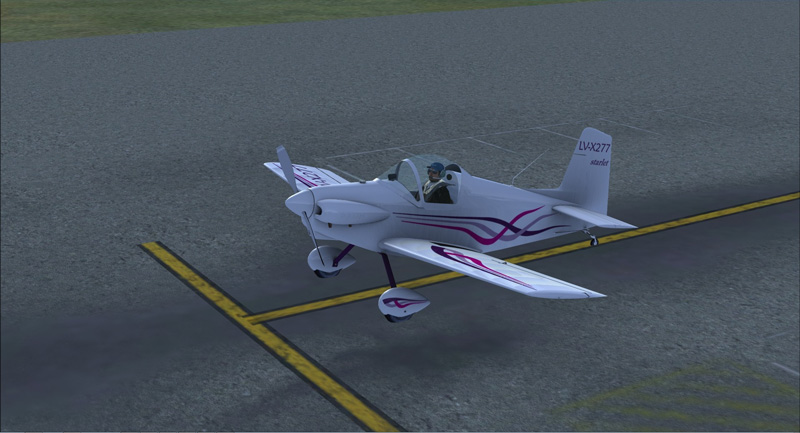 |
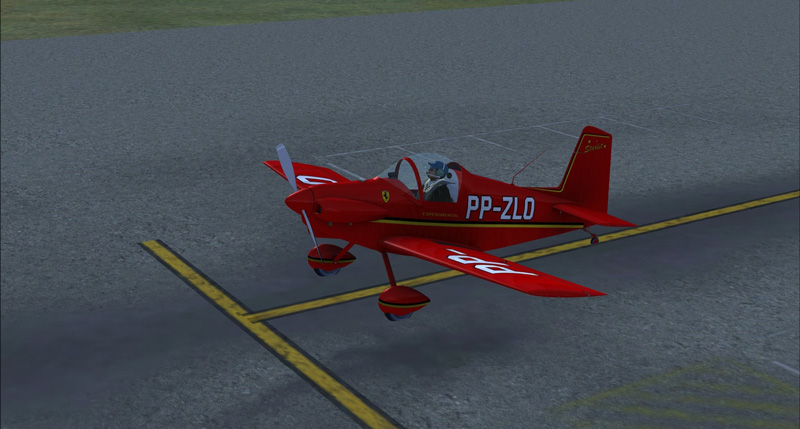 |
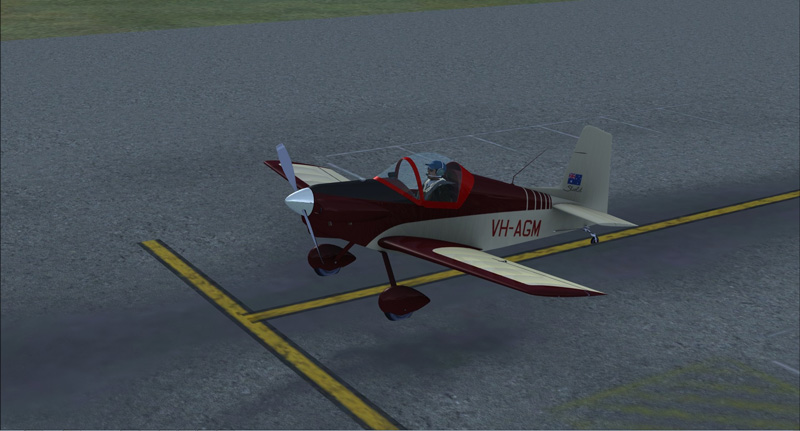 |
First Impressions
After loading up the Corby you’ll be greeted with a very basic cockpit. It’s a little more advanced than the Piper Cub, but not by much. The visibility is excellent thanks to the bubble canopy and low slung wings. On the ground forward visibility is not that good because this is a tail-dragger, better brush up on those S-Turns before you taxi out.
|
|
In Flight
This is a very simple aircraft and is very easy to fly. The start-up procedure consists of turning on the battery and pressing the ignition switch.
The Corby doesn’t come with a manual so it’s difficult the gauge if it flies by the numbers, but there are several technical specifications around the internet which I used. This may be partly due to no two aircraft being the same.
On take-off she’ll take to the air at around 55ks and easily climb out at 70kts and 1,000fpm without much trimming. I couldn’t find any data for the maximum altitude level, but I doubt that it would be the 22,500ft which I managed to climb to! After take-off I left the throttle at maximum and she continued to climb quite happily at 65kts to 22,500ft – it did take quite a while and I used a sim rate of x64 to get there.
Trimming the Corby for cruise is easy enough and she’ll happily rattle along at 110kts, which is more or less the average speed given by several websites. The maximum speed (in level flight) I found quoted at 140kts, which I managed to achieve…just. Flying fast and low skimming the trees is a lot of fun. Because the Corby is so agile and responsive you can keep really low and still be able to get out of trouble quite easily.
I found varying stall speeds, some as low as 30kts. This Corby stalls at around 45kts and, using Accu-Feel, you are given plenty of warning before the stall happens. Recovering from the stalls is as simple as dipping the nose and letting the airspeed build back up again.
The Corby is very manoeuvrable and responsive when in the air. It needs minimal control inputs to change direction, and providing that you have the trim and power set correctly she’ll happily climb in a tight spiral without breaking a sweat, although it may leave you feeling a bit dizzy!
Landing is quite tricky because of the reduced visibility due to the long nose. I found that flying the approach at 65kts and then aiming to land at 55kts made for some smooth landings. It is quite difficult the slow her down as there aren’t any flaps. After reducing power I found that she still wanted to stay in the air.
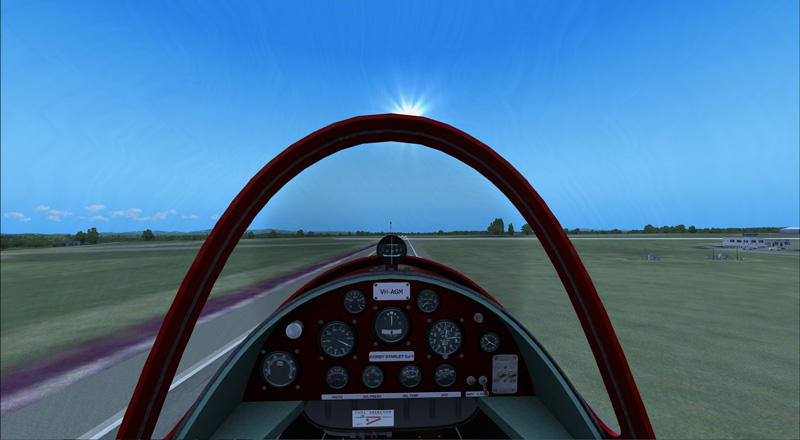 Landings can be tricky |
Conclusion
Whilst it’s difficult to comment on the accuracy of this add on due to the lack of information available, it is a believable model. I don’t really care for aerobatics but this aircraft doubles up well as a tourer. Because it is so simple you needn’t worry about the performance within FSX ; I was achieving well over 100fps flying low to the ground using Orbx scenery. It’s an enjoyable aircraft to just get into and go flying for an hour and get away from some of the complex airliners and GA aircraft that we have become used to.
Give it a go!
![]()
Verdict
|
• External Model: • Internal Model: • Sounds: • Flight Characteristics: • Flight Dynamics: • Documentation |
7.0/10 7.0/10 7.0/10 6.0/10 8.0/10 N/A |

Mutley's Hangar score of 7.0/10
Review machine Spec: Intel i7 2600k @3.40GHz | 8GB DDR3 RAM 1600MHz |NVidia GTX570 1280MB GFX Card |Windows 7 64bit Home Premium
|
::
Product Page
|
